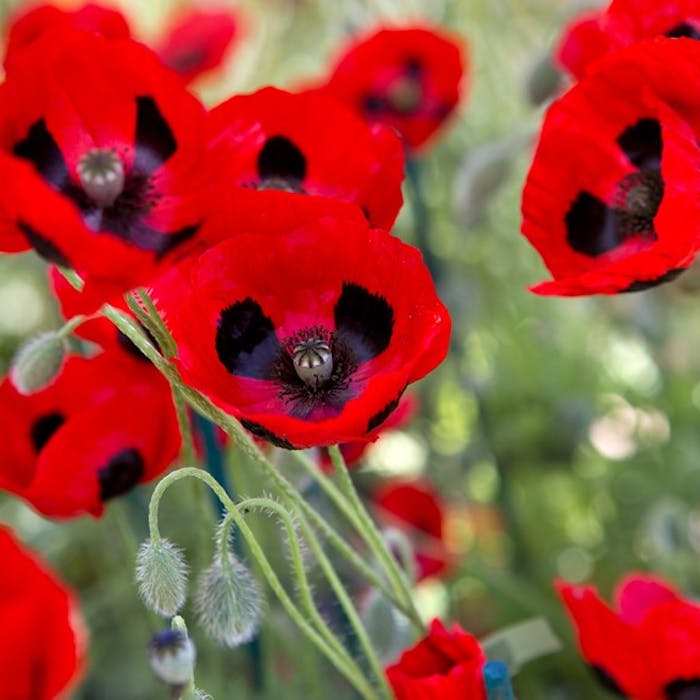
The poppy - vibrant symbol of sacrifice
Before the advent of intensive farming and the use of herbicides, the brilliant scarlet poppy was a common sight growing amongst Britain's corn fields. Its tissue paper bright red flowers were a striking contrast to the golden corn in high summer. In the twentieth century, it became a symbol of bloodshed on the World War One battlefields.
The common poppy (Papaver rhoeas) is an annual wildflower. It is also known as the 'corn poppy' due to its preference for wheat fields. It can still be found on the field margins of cereal crops, where it has escaped spraying with weedkillers.
The poppy is now more likely to be seen as part of intentional wildflower seeding, for example on newly-built road verges and embankments, or perhaps where earth works have disturbed soil containing old seed banks. It also enjoys scrub, waste ground and neglected farmland. It flowers from June to August, often alongside other 'arable weeds' (also called 'cornfield flowers') such as corn chamomile and corncockle.
The fruit after flowering is a rounded 'pepper pot', which when fractured, spills out seeds to be scattered on the wind.
Poppy seeds only sprout when the earth about them is disturbed. This is why so many grew on the battlefields of the First World War when trenches were excavated and infantry and horses disturbed the soil. The connection between the red common poppy and death on the battlefield was heightened by the popularity of military medic John McCrae's poem 'In Flanders Fields'. McCrae died of pneumonia near the end of the war.
The poem inspired American War Secretary, Moina Michael, who bought poppies to sell to her friends to raise money for Servicemen in need after the First World War. This was adopted by The (Royal) British Legion in 1921 who ordered 9 million of these handmade poppies and sold them on 11th November that year in the first ever Poppy Appeal.
In her autobiography, The Miracle Flower, The Story of the Flanders Fields Memorial Poppy (published in 1941) Moina described how the idea for a memorial emblem of a red poppy came to her in a moment of revelation in 1918. Moina dedicates the book to John McCrae and writes that his poem was her inspiration.
Further reading
Links to external websites are not maintained by Bite Sized Britain. They are provided to give users access to additional information. Bite Sized Britain is not responsible for the content of these external websites.
